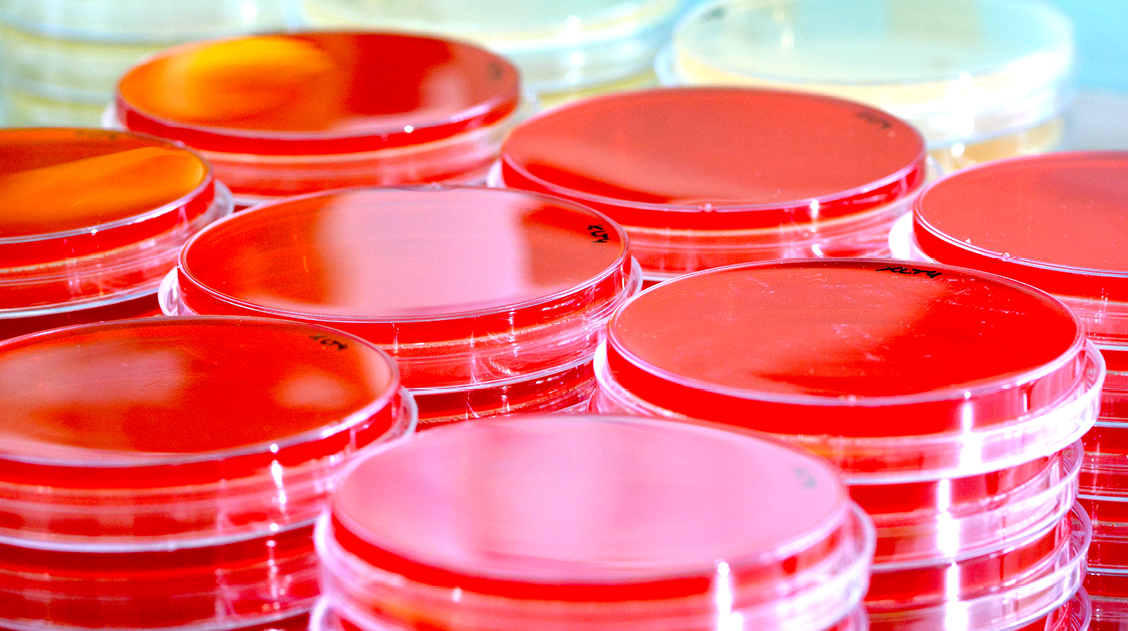
Nanoporous Xerogels “Sniff Out” Bad Bacteria
Can xerogels be used to sniff out bacteria?
Bacteria were among the first life forms to appear on the face of the Earth. They have the uncanny ability to overcome even the harshest of environments. This includes acidic hot springs to the ice-fields of the poles and deep portions of the Earth’s crust.
They are so abundant, that they make up the majority of the total biomass on Earth. Astonishingly, nearly 90% of the cells that move around with humans are actually bacteria, though since they are so much smaller than human cells, they make up only about 10 percent of our body weight.
Are bacteria useful?
Sometimes bacteria are useful, sometimes not. For instance, we use them to make cheese, sauerkraut, and vinegar. We use bacteria to clear our polluted water and oil spills, as biological pesticides, or through genetic engineering to make insulin. They are also growth factors and antibodies. Critically, they also form an integral part of our immune and digestive systems. However, some bacteria infest plants and cause harvest disasters. They sometimes grow in foodstuffs and cause fouling. Bacteria infect production units for pharmaceuticals or agrichemicals. Most importantly, they cause diseases, such as diphtheria (Corynebacterium diphtheriae) tetanus (Clostridium tetani), cholera (Vibrio cholerae), tuberculosis (Mycobacterium tuberculosis), and even the Black Death (Yersinia pestis).
Bacteria utility
It is not surprising that in many fields of medicine, biotechnology, and the food industry, the rapid detection of harmful bacteria is necessary. This helps to initiate appropriate control, disinfection, safety, or treatment procedures.
Normally, the presence and type of bacteria is tested for via standard microbiological and biochemical methods. Or by detecting bacterial “fingerprints” based on their genetic or metabolic profiles. What all these methods have in common is that they are moderately elaborate and time-consuming. Recently, “artificial noses” that sniff out particular volatile chemicals released by bacteria have emerged. It is hoped that these can overcome some of the limitations of more traditional methods. However, with these novel techniques, specific and semi-quantitative detection of bacterial volatile chemicals is still a challenge.
As are the costs.
Nanoporous xerogels
In Discriminating Bacteria with Optical Sensors Based on Functionalized Nanoporous Xerogels, Crunaire and co-workers describe a novel sensor. The sensor is based on a xerogel matrix, which detects indole released from over 85 bacteria species. This includes many pathogens. An indole is a metabolite that is produced by enzymatic splitting of the amino acid tryptophan into pyruvic acid, ammonia, and indole.
Indole can be detected colorimetrically after formation of the strongly colored, green-blue, azafulvenium chloride salt by reaction with Ehrlich’s reagent (p-dimethylaminocinnamaldehyde). The authors immobilized Ehrlich’s reagent in the hybrid organic–inorganic nanoporous matrix of the xerogel.
Advantages of xerogels
A major advantage of xerogels is that the nanopore diameter can be controlled so that indole is trapped in the matrix but tryptophan is rejected. This avoids interference by tryptophan during analysis. Furthermore, the sponge-like nature of the xerogel concentrates indole and enhances the detection reaction. This is because its many cavities act as small isolated reactors.
Overall, this novel bacterial sensor offers several advantages over currently available indole detection methods, including low cost, non-interference by tryptophan, high stability, high sensitivity, and the ability to detect trace amounts over long periods of time. Particular application areas might include the monitoring of infections in industrial plants, for counter-terrorism purposes, hospital environments, clinical labs, and as rapid tests in community medical practices.
More research on nanoporous xerogels
For further reading on nanoporous xerogels and related content, we refer the interested reader to the following:
- Dykhuizen, D., Species Numbers in Bacteria. Proc Calif Acad Sci 2005, 56, (6 Suppl 1), 62-71
- Crunaire, S.; Marcoux, P.; Ngo, K.-Q.; Moy, J.-P.; Mallard, F.; Tran-Thi, T.-H., Discriminating Bacteria with Optical Sensors Based on Functionalized Nanoporous Xerogels. Chemosensors 2014, 2, (2), 171-181
- Alegre, C.; Sebastián, D.; Baquedano, E.; Gálvez, M. E.; Moliner, R.; Lázaro, M., Tailoring Synthesis Conditions of Carbon Xerogels towards Their Utilization as Pt-Catalyst Supports for Oxygen Reduction Reaction (ORR). Catalysts 2012, 2, (4), 466-489.
- Alegre, C.; Sebastián, D.; Gálvez, M.; Moliner, R.; Stassi, A.; Aricò, A.; Lázaro, M.; Baglio, V., PtRu Nanoparticles Deposited by the Sulfite Complex Method on Highly Porous Carbon Xerogels: Effect of the Thermal Treatment. Catalysts 2013, 3, (3), 744-756.
- Bednarz, S.; Ryś, B.; Bogdał, D., Application of Hydrogen Peroxide Encapsulated in Silica Xerogels to Oxidation Reactions. Molecules 2012, 17, (7), 8068-8078.
- El Barbri, N.; Llobet, E.; El Bari, N.; Correig, X.; Bouchikhi, B., Electronic Nose Based on Metal Oxide Semiconductor Sensors as an Alternative Technique for the Spoilage Classification of Red Meat. Sensors 2008, 8, (1), 142-156.
- Farrow, M. J.; Hunter, I. S.; Connolly, P., Developing a Real Time Sensing System to Monitor Bacteria in Wound Dressings. Biosensors 2012, 2, (2), 171-188.
- Setterington, E. B.; Alocilja, E. C., Electrochemical Biosensor for Rapid and Sensitive Detection of Magnetically Extracted Bacterial Pathogens. Biosensors 2012, 2, (1), 15-31.
- Sousa, J. P. S.; Pereira, M. F. R.; Figueiredo, J. L., Carbon Xerogel Catalyst for NO Oxidation. Catalysts 2012, 2, (4), 447-465.










